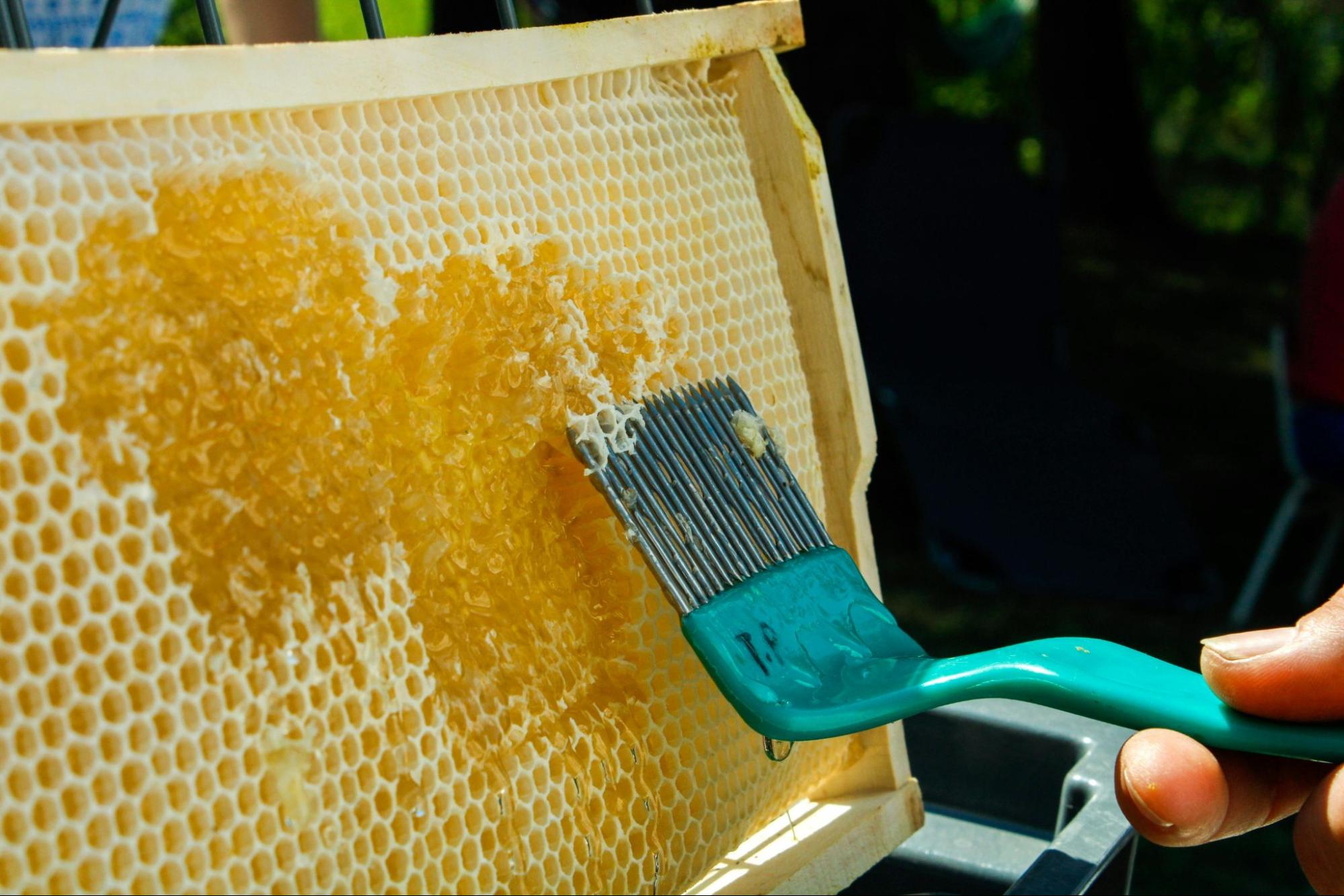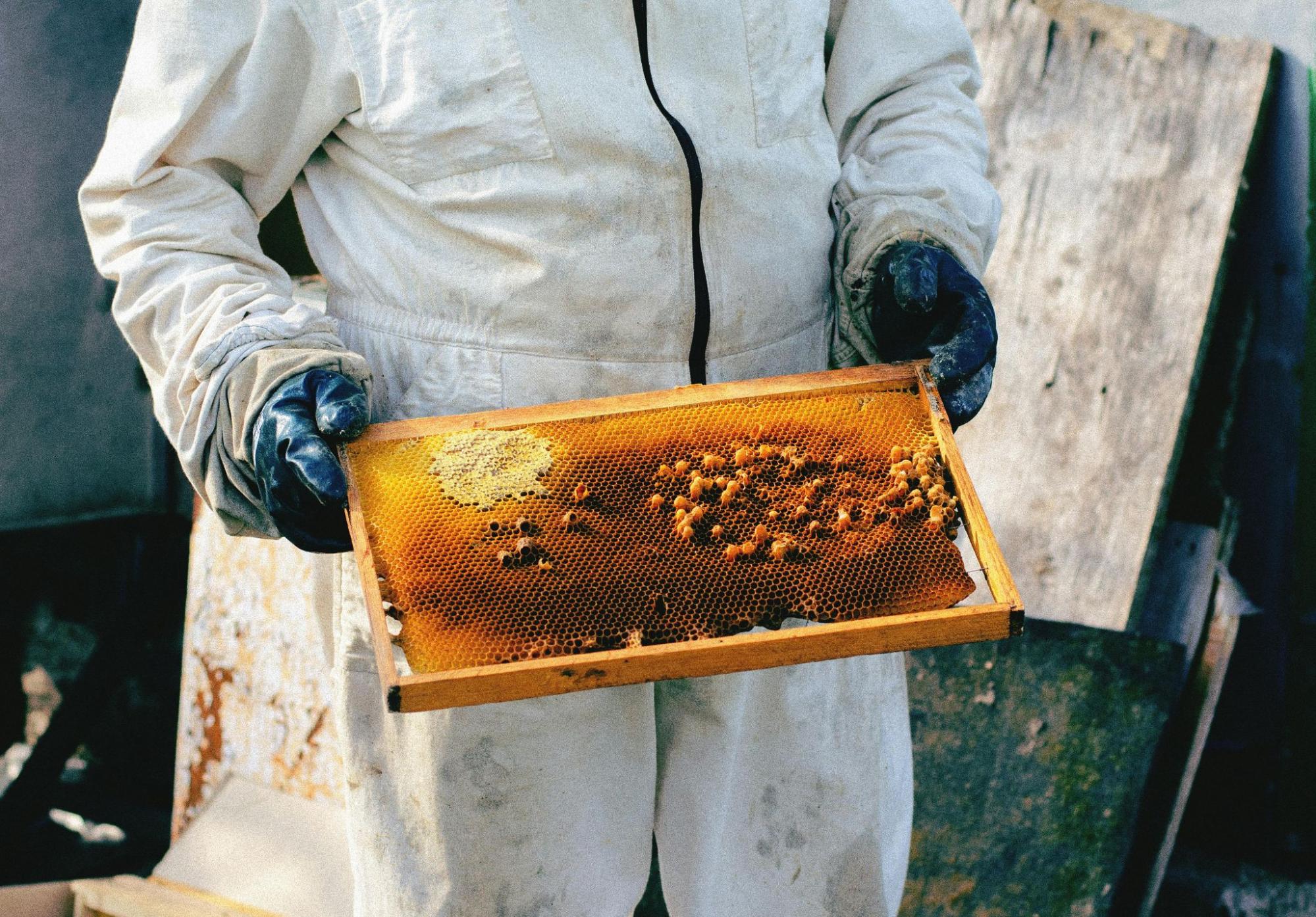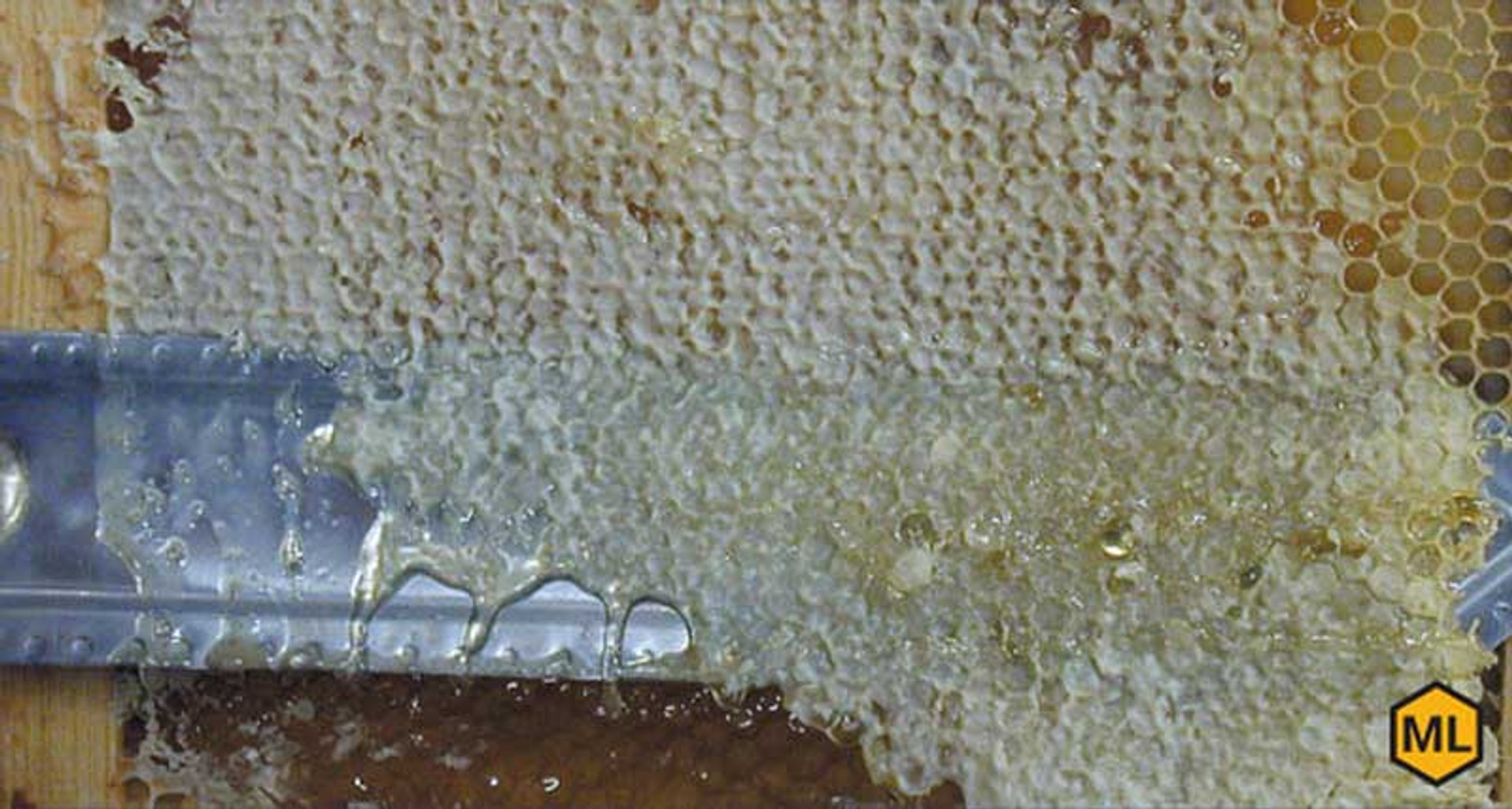Guide To Uncapping Frames
Beekeepers Guide to Uncapping Honey Frames
Are you ready to unlock the final step in your beekeeping journey and harvest the fruits of your labor? Uncapping frames is a critical process that transforms your diligent work into harvestable honey, marking the culmination of a season's effort.
This guide introduces the essential practice of uncapping, a process pivotal for beekeepers aiming to extract honey efficiently. It’s a step that demands precision and the right tools to ensure the maximum yield without compromising the integrity of the combs.
As we explore the techniques and beekeeping tools necessary for successful uncapping, our aim is to equip you with practical knowledge. By understanding the importance and execution of this process, you can enhance your beekeeping skills and enjoy a bountiful harvest.
Preparing for Uncapping
Successful honey extraction begins well before the first frame is uncapped. Preparation is key! When you’re ready to harvest, make sure you have everything you need ready to go. But which uncapping tools should you use?
There are many different kinds of uncapping devices, ranging from scratchers to heated knives. Selection should be based on efficiency, ease of use, and the specific needs of the beekeeping operation. Key items include the following:
- Uncapping knife. An electric knife is preferred for its speed and ease, but a cold knife is a viable non-heated alternative.
- Uncapping scratchers. Useful for areas the knife can't reach, providing a manual option for frame uncapping.
- Uncapping plane. Offers precision with an adjustable blade depth, catering to both right and left-handed users.
- Uncapping punch. Ideal for quick capping removal, especially in frames destined for comb honey production.
- Containers. For collecting honey and wax cappings. Ensure they are clean and ready for use.
- Protective gear. Gloves and aprons can help keep the beekeeper clean and prevent sticky situations.

Workspace Setup
Setting up your workspace strategically can make a significant difference in the uncapping process. A large, easily cleaned surface, such as a stainless-steel table, should serve as your base, with tools and containers placed within easy reach to facilitate a seamless workflow.
The proximity of your setup to the honey extractor streamlines the transfer of uncapped frames, minimizing the time and effort required to move from uncapping to extraction.
Workflow Considerations
The goal is to ensure a continuous and orderly process. So, organize your frames in batches to maintain a consistent rhythm, moving smoothly from one frame to the next without interruption. This batch-processing approach helps in maintaining focus and efficiency, reducing the downtime between frames.
An organized workflow facilitates a quicker cleanup post-extraction and prevents any potential contamination of the honey. Safety is paramount; ensure that the workspace is free from clutter and that all tools, especially heated ones, are handled with care to avoid accidents.
| Hive Hint: Introduce a gentle airflow in the uncapping area to keep bees away, making the task more manageable. |
Comb Depth and Uncapping Tools Efficiency
The efficiency of uncapping tools can vary significantly depending on the depth of the comb in honey frames. Understanding this relationship is essential for beekeepers to select the most appropriate tool for their frames, ensuring a smooth and effective uncapping process.
The table below shows a comparison of different uncapping tools and their efficiency across various comb depths, providing beekeepers with insights into optimizing their uncapping process.
| Comb Depth | Uncapping Tool Efficiency | Recommended Tool |
| Shallow Comb | High | Uncapping Fork |
| Medium Comb | Moderate to High | Electric Knife |
| Deep Comb | Moderate | Cold Knife |
| Very Deep Comb | Low to Moderate | Uncapping Plane |
The Uncapping Process: A Step-by-Step Guide
Uncapping frames is a meticulous process that, when done correctly, can significantly impact the quality and quantity of honey harvested. This step-by-step guide will provide beekeepers with a clear and efficient method for uncapping, ensuring the best possible outcomes.
Step 1: Heat the Uncapping Knife
If you're using an electric uncapping knife, the first step is to heat it to the optimal temperature. This allows for smooth and efficient removal of the wax caps. For those opting for a cold knife, pre-heating it in warm water can achieve a similar effect, though it may require reheating periodically to maintain efficiency.
Step 2: Secure the Frame
Hold the frame securely with one hand, or use a frame holder if available. It’s important to have a firm grip to ensure precision while uncapping and to avoid damaging the comb. Position the frame at an angle that allows for easy access to the capped cells.
Step 3: Uncap from Top to Bottom
Begin at the top of the frame, gently running the heated knife or tool of choice down the surface of the comb. The goal is to slice off the wax cappings without digging too deeply into the honeycomb. Maintaining a consistent angle and pressure is key to removing just the right amount of wax and exposing the honey.
Step 4: Check and Scrape Missed Areas
After the initial pass, inspect the frame for any missed cappings. An uncapping fork or scratcher is ideal for removing any remaining caps that the knife may have missed. This step ensures that all honey is accessible for extraction and prevents waste.
| Lighting Tip: Perform uncapping in a well-lit area or use a dedicated uncapping light. Good lighting helps identify missed cappings more easily, ensuring no honey is left behind and maximizing your yield. |
Step 5: Place the Uncapped Frame in the Extractor
Once the frame is fully uncapped, carefully place it into the honey extractor. Ensuring the frame is properly positioned will facilitate efficient extraction and reduce the risk of damage to the comb, which can be reused in the hive.
Step 6: Clean Up
After all frames have been uncapped and placed in the extractor, clean your tools and workspace. Wax cappings can be collected for processing into beeswax products, adding value to your beekeeping efforts.
Post-Uncapping Steps
After uncapping frames, several critical steps must be taken to ensure the harvested honey is processed efficiently, the equipment is maintained, and all by-products are utilized effectively. This comprehensive approach not only maximizes the beekeeper's yield but also contributes to a sustainable beekeeping practice.
Extracting Honey
- Immediate placement in the extractor. Uncapped frames should be placed in the honey extractor as soon as possible to separate the honey from the comb using centrifugal force.
- Frame balance. Ensure frames are evenly balanced within the extractor to prevent damage to the equipment.
- Inspection and storage. After extraction, inspect frames for any damage. Store reusable frames in a dry, protected area to avoid infestations and ensure their longevity for future use.
Managing Wax Cappings
- Collection and draining. Collect wax cappings and allow them to drain to recover any remaining honey. This process can be facilitated by using a cappings spinner or a simple mesh screen.
- Cleaning and processing. Clean the wax by melting and filtering out impurities. This purified wax can be utilized for various applications, such as candle-making or cosmetic products, adding value to your beekeeping operations.
| Eco Tip: Utilize purified beeswax in sustainable packaging solutions, like beeswax wraps, reducing plastic use and enhancing your product line. |
Equipment Maintenance
- Cleaning. It's imperative to clean all used equipment, including uncapping tools, extractors, and containers, to prevent contamination and ensure they are ready for the next harvest.
- Maintenance checks. Perform regular maintenance checks on all mechanical parts, especially the honey extractor, to avoid future malfunctions and prolong the equipment's life.

Common Mistakes in Honey Harvesting
Even seasoned beekeepers can make missteps that may compromise their honey crop's quality or the efficiency of their operations. Identifying common pitfalls can help ensure the harvested honey maintains its purity and value.
Misusing the Hot Knife
A critical tool in the uncapping process is the hot knife, essential for cleanly removing the wax capping. A frequent error is overheating the knife, which can harm the delicate flavors of the honey beneath. The ideal use involves maintaining a temperature that uncaps efficiently without compromising the honey's quality, ensuring the final product remains pure and unaltered.
Overlooking Uncapping Tank Efficiency
The uncapping tank plays a dual role: it supports frames during uncapping and collects dripping honey. A common oversight is failing to optimize the tank's use, leading to unnecessary waste. Efficiently arranging frames within the tank not only facilitates the uncapping process but also maximizes the collection of dripping honey, enhancing the overall yield of extracted honey.
Premature Harvesting from Honey Supers
Inspecting honey supers for maturity before harvest is critical. Attempting to extract from supers that are not fully capped can lead to premature harvesting, resulting in extracted honey with a higher moisture content. This not only risks the honey's quality by increasing the potential for fermentation but also affects the purity and storage life of the honey crop.
Skipping Adequate Filtration
Post-extraction, thorough filtration is crucial to remove impurities and wax remnants from the extracted honey. Rushing this step can leave the final product less than pure, detracting from its quality and marketability. A meticulous filtration process ensures the honey remains pure, elevating its appeal to consumers and maintaining the integrity of the beekeeper's product.
Neglecting Post-Harvest Equipment Care
Post-harvest, the maintenance of beekeeping equipment, including the uncapping tank and hot knife, is essential yet sometimes neglected. Without proper cleaning, residual honey and wax can attract pests or lead to contamination. Regularly cleaning and storing equipment ensures readiness for the next season, preserving the investment in quality tools and supporting sustainable beekeeping practices.
Perfect Your Harvest with the Right Tools
The uncapping process is crucial in beekeeping, setting the stage for harvesting honey. With the right tools and techniques, beekeepers can efficiently unlock the sweet bounty of their hives.
Advancements in uncapping methods have made this step more effective, improving both the quantity and quality of honey harvested. This progress highlights the importance of choosing suitable tools and adopting best practices in beekeeping.
As beekeepers share knowledge and refine their skills, the practice of uncapping frames underscores the community's commitment to excellence. This collective approach helps ensure the continued success and sustainability of beekeeping.
For all your beekeeping needs, consider shopping at Mann Lake!

